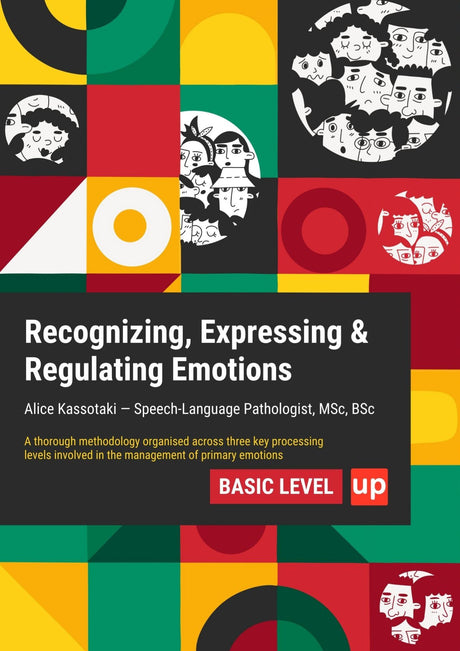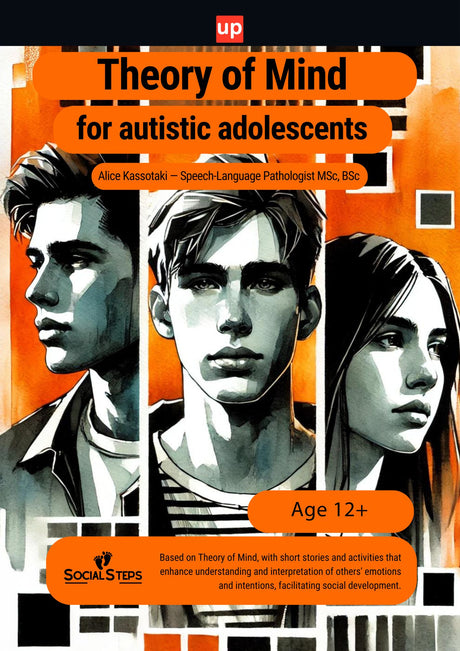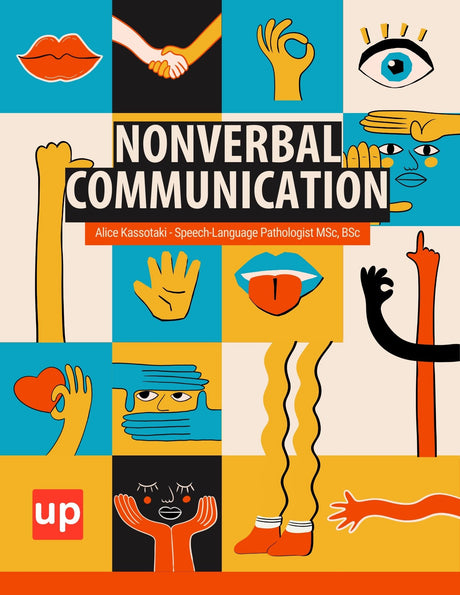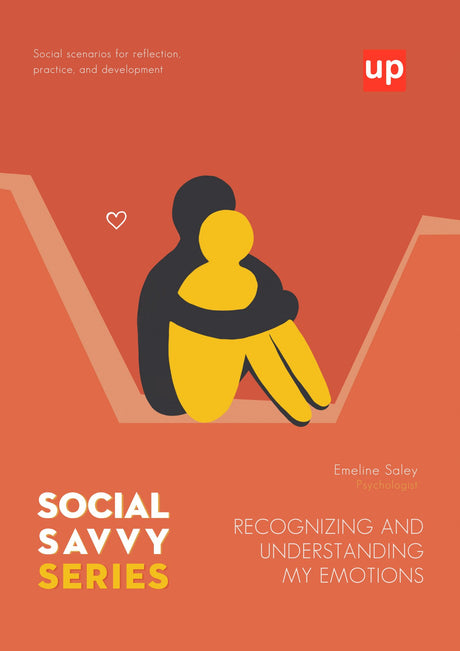The Best Special Education Model for Inclusive Classrooms
A special education model explains how schools can successfully educate students with disabilities. In this article, we will break down different models, like IEP, RTI, and UDL, and show how they create inclusive classrooms.
Key Takeaways
- Inclusive classroom environments are essential for accommodating the diverse needs of students with disabilities, ensuring they receive appropriate educational support.
- The Individualized Education Program (IEP) and Response to Intervention (RTI) frameworks play critical roles in tailoring instruction and identifying student needs early to promote academic success.
- Collaboration among special education teachers, general education teachers, and school administrators is vital for implementing effective inclusive education strategies and improving special education programs.
Understanding Special Education Models

Special education involves individually planned and systematically monitored teaching arrangements designed to meet the unique needs of students with disabilities. The Individuals with Disabilities Education Act (IDEA) ensures that special education services are delivered in public schools, providing a legal framework for supporting students with disabilities. The increase in special education enrollment is significantly driven by the growing diagnoses of autism and similar disabilities, highlighting the importance of a special education program.
The perception and treatment of individuals with disabilities have evolved through various disability models, which have in turn influenced special education practices. These interventions help children with disabilities overcome learning obstacles and receive appropriate educational programs. Tailored teaching approaches are necessary to accommodate the diverse needs of students with disabilities.
Inclusive learning environments accommodate diverse needs while promoting engagement and a sense of belonging for all students. However, the lack of individual attention from instructors remains a significant barrier to education for disabled children. Concerns regarding eligibility criteria also persist, as parents and advocates fear that some students may be improperly placed or denied support.
Individualized Education Program (IEP)
The Individualized Education Program (IEP) is the cornerstone of special education, designed to meet the unique needs of each student with a disability. Eligibility for IDEA services requires a diagnosis of one or more disabilities and a need for special accommodations. The IEP development process involves three essential steps: evaluation, eligibility determination, and IEP development.
An IEP document includes detailed information about the student’s specific needs and yearly goals for special education services. Adjustments in special education include accommodations, which are changes made to teaching practices, and modifications, which simplify the material for better accessibility. These adjustments ensure that each student receives an appropriate educational program tailored to their needs.
IEP meetings are crucial for assessing whether a student’s educational plan requires modifications. During these meetings, special education teachers, general education teachers, parents, and other school personnel collaborate to review the student’s progress and make necessary adjustments to the IEP. This collaborative approach ensures that the student’s IEP remains relevant and effective.
The IEP process emphasizes individualized instruction, allowing special education teachers to tailor their teaching methods to each student’s unique needs. This approach not only supports academic success but also fosters a positive learning environment for all students. Specialized instruction and accommodations through the IEP help students with disabilities thrive in general education classrooms.
The ultimate goal of the IEP is to provide students with disabilities a quality education that prepares them for future success. Through continuous monitoring and collaboration, educators can create inclusive classrooms that support the diverse needs of all students.
Response to Intervention (RTI)
Response to Intervention (RTI) is a proactive approach designed to identify and support students with learning challenges early on. This multi-tier model provides increasingly intensive interventions based on the student’s needs, with regular monitoring to track progress. Promptly addressing learning difficulties ensures all students receive the necessary support to succeed.
The RTI framework consists of multiple tiers, each representing a different level of support. The first tier involves high-quality classroom instruction and universal screening of all students. The second tier provides targeted interventions for students who are not making adequate progress in the first tier. The third tier offers intensive, individualized support for students who continue to struggle despite the interventions in the previous tiers.
Regular monitoring is a critical component of the RTI framework, as it helps educators identify students who may need additional interventions. Collecting and analyzing student performance data allows educators to make informed decisions about the necessary type and intensity of support. This data-driven approach ensures that interventions are tailored to each student’s needs, promoting academic success in an inclusive classroom environment.
Universal Design for Learning (UDL)
Universal Design for Learning (UDL) is a framework aimed at optimizing teaching and learning for all individuals by providing multiple means of engagement, representation, and action/expression. UDL principles promote flexible learning environments that accommodate diverse learning needs, ensuring that all students can access the curriculum.
Incorporating UDL principles helps educators create inclusive classrooms that support students with varying abilities and learning styles. This proactive approach not only supports academic success but also fosters a positive learning environment for all students. UDL emphasizes the importance of providing multiple ways for students to engage with the material, express their understanding, and demonstrate their learning.
The application of UDL principles in the classroom involves designing lessons that are accessible to all students from the outset. This includes using a variety of instructional methods, materials, and assessments to meet the diverse needs of students. This approach creates a more inclusive learning environment that supports the success of all students, including those with disabilities.
Implementing Inclusive Education Strategies

Implementing inclusive education strategies involves creating a learning environment that accommodates the diverse needs of all students, including those with disabilities. Special education is often taught in general education classrooms, facilitating the integration of students with disabilities into mainstream settings. However, concerns arise from the potential inability to deliver differing instructional methods effectively for students with diverse needs.
Developing strategies for tailored instruction can help mitigate these concerns and enhance inclusion. Inclusive education strategies emphasize collaboration between special education teachers, general education teachers, and support staff to create a supportive learning environment. Collaborative efforts among educators help develop and implement individualized instruction for each student’s unique needs.
This section will explore various strategies for implementing inclusive education, including co-teaching models, classroom accommodations and modifications, and the use of assistive technology in classrooms. These strategies aim to support students with disabilities in general education settings, ensuring they receive a quality education alongside their peers.
Co-Teaching Models
Co-teaching models are designed to enhance inclusive learning by fostering collaboration between special education and general education teachers. This collaborative approach allows educators to share responsibility for instruction, ensuring that all students, including those with disabilities, receive the support they need.
Team teaching involves both educators sharing equal responsibility for instruction, actively engaging the whole class together. This model promotes a cohesive learning environment where students benefit from the expertise of both teachers.
Parallel teaching allows teachers to divide the class into smaller groups, with each educator teaching the same content simultaneously. This approach enables more personalized instruction and better addresses the diverse needs of students.
Station teaching enables students to rotate through different learning centers, allowing multiple teaching approaches within the same lesson to serve students. This model provides opportunities for differentiated instruction and hands-on learning experiences.
Alternative teaching provides targeted instruction in a smaller group setting while the other educator manages the larger group. This approach allows for more individualized support for students who need it.
Effective collaboration between general education and special education teachers is essential for developing support plans tailored to meet the diverse needs of students. By working together, educators can create an inclusive classroom environment that supports the success of all students.
Classroom Accommodations and Modifications
Classroom accommodations and modifications play a crucial role in supporting students with disabilities in general education classrooms and resource room settings. Accommodations can include extended time for assignments, alternative testing formats, and altering teaching methods to ensure all students can access the curriculum regardless of their needs.
Accommodations may be categorized based on adjustments in how information is presented or how students are allowed to respond. For example, providing visual aids, using simplified language, or allowing oral responses instead of written ones can help students with disabilities access the curriculum more effectively. Modifications, on the other hand, change the actual content or expectations of assignments to make them more appropriate for students with disabilities.
General education teachers are responsible for creating lesson plans that support the learning of all students, including those with disabilities. This involves collaborating with special education teachers and support staff to develop and implement accommodations and modifications. A general education teacher works alongside support staff members who assist in maintaining an effective inclusive environment by providing necessary resources and support to educators.
Peer support initiatives can also play a significant role in fostering empathy and improving social skills among students, creating a more inclusive school culture. These programs help special education students develop empathy and understanding through shared experiences with their peers. By incorporating peer support systems, schools can create a more inclusive and supportive learning environment for all students.
Students can receive both accommodations and modifications, depending on their individual needs. By providing these supports, educators can ensure that all students have the opportunity to succeed in general education classrooms.
Assistive Technology in Classrooms
Assistive technology can significantly enhance the learning experience for students with varying disabilities by supporting their unique needs. These technological tools can range from simple devices like pencil grips to complex software designed for communication. By incorporating assistive technology, educators can provide students with the tools they need to access the curriculum and succeed in the classroom.
For example, speech recognition software can help students with disabilities improve their communication skills, allowing them to participate more fully in classroom activities. Other assistive technologies, such as screen readers, text-to-speech software, and adaptive keyboards, can support students with visual or motor impairments. These tools enable students to engage with the material and demonstrate their understanding in ways that suit their abilities.
The use of assistive technology in classrooms not only supports the academic success of students with disabilities but also fosters a more inclusive learning environment. By providing the necessary tools and resources, educators can ensure that all students have the opportunity to thrive in general education settings.
Roles and Responsibilities in Inclusive Education

Effective inclusion requires collaboration among teachers, school administrators, and support staff to create a supportive environment for students with disabilities. Each group plays a critical role in implementing inclusive education strategies and ensuring that students receive the support they need to succeed.
Special education teachers, general education teachers, and school administrators must work together to develop and implement individualized instruction, accommodations, and modifications. By sharing responsibilities and collaborating effectively, these educators can create inclusive classrooms that support the diverse needs of all students.
This section will explore the specific roles and responsibilities of special education teachers, general education teachers, and school administrators in fostering inclusive education. By understanding their roles, educators can better collaborate and create a supportive learning environment for students with disabilities.
Special Education Teachers
Special education teachers are responsible for ensuring quality education for students with disabilities by developing and implementing IEPs, tailoring instruction, and modifying the curriculum as needed. A special education teacher conducts regular assessments to evaluate student progress towards academic goals, providing updates on their development.
In addition to their instructional responsibilities, special education teachers advocate for students with disabilities, collaborating with general education teachers to create an inclusive environment and ensure understanding of inclusive practices. Their expertise in specialized instruction and individualized education plans is crucial for supporting the diverse needs of students with disabilities.
By working closely with general education teachers, special education teachers can ensure that all students receive the support they need to succeed in general education classrooms. Their role in developing and implementing IEPs, conducting assessments, and advocating for students is essential for creating an inclusive learning environment.
General Education Teachers
To facilitate inclusion, general education teachers must adapt their teaching methods and ensure a positive classroom environment for all students. Creating an inclusive environment requires general education teachers to implement strategies that support all students, focusing on those with disabilities. By developing lesson plans that incorporate accommodations and modifications, they can ensure that students with disabilities can access the curriculum effectively.
Frequent assessments can help educators adjust teaching methods to better meet the needs of students with disabilities. These assessments allow teachers to identify specific areas where students need additional support and make necessary adjustments to their instructional strategies. Close monitoring of student progress allows general education teachers to provide targeted interventions for academic success.
Collaboration with special education teachers is essential for general education teachers to understand and implement inclusive education strategies effectively. By working together, they can create a supportive learning environment that meets the diverse needs of all students, ensuring that every student has the opportunity to succeed.
School Administrators and Support Staff
School administrators play a critical role in fostering inclusive education by advocating for resources and support structures. Proper resource allocation ensures that schools have the necessary tools and staffing to implement inclusive practices effectively. Funding for special education services is essential in providing adequate support to students with disabilities in inclusive classrooms.
Support staff, such as guidance counselors and social workers, contribute to creating an inclusive environment by addressing students’ holistic needs. They provide essential services that support students’ emotional and social well-being, which is crucial for their academic success. By addressing these needs, support staff help create a positive learning environment where all students can thrive.
Policy implementation by school administrators is critical for establishing guidelines that promote inclusive education practices within schools. By advocating for inclusive policies and ensuring their effective implementation, administrators can create a school culture that values diversity and inclusion, supporting the success of all students.
Creating Supportive Learning Environments

Creating a nurturing environment is crucial for students with special needs, as it promotes emotional safety and academic engagement. Supportive learning environments are essential for fostering inclusion and addressing diverse student needs. Collaboration with families and local communities significantly enhances the educational experience for students with special needs.
Engagement with families and the community plays a vital role in creating a support network for students with special needs. By involving families in the educational process and leveraging community resources, schools can provide a more comprehensive support system for students. This collaboration not only enhances academic outcomes but also promotes social and emotional well-being.
This section will explore strategies for creating supportive learning environments, including Positive Behavioral Interventions and Supports (PBIS), Social and Emotional Learning (SEL), and Peer Support Programs. These strategies aim to create a positive and inclusive school climate that supports the success of all students.
Positive Behavioral Interventions and Supports (PBIS)
Positive Behavioral Interventions and Supports (PBIS) is designed to improve student behavior and create a positive school climate. By breaking classes into smaller groups or stations, PBIS enhances student engagement in inclusive classrooms. This approach allows for more personalized instruction and better addresses the diverse needs of students.
Key factors for the success of PBIS include mutual respect, open attitudes toward inclusion, strong administrative support, and knowledge of students’ needs. PBIS fosters a culture of respect and inclusion, creating a positive learning environment for all students to thrive. Inclusive SEL strategies aim to reduce behavioral issues and improve academic performance among students with various emotional challenges.
Implementing PBIS requires collaboration among educators, administrators, and support staff. By working together, they can develop and implement strategies that promote positive behavior and create a supportive school climate. This collaboration ensures that all students receive the support they need to succeed.
Social and Emotional Learning (SEL)
Social and Emotional Learning (SEL) programs are designed to enhance students’ ability to manage emotions, establish positive relationships, and make responsible decisions. These programs focus on helping students develop essential social and emotional skills, which are crucial for personal and academic success.
SEL programs also promote skills such as goal setting, showing empathy for others, and maintaining positive relationships. By incorporating SEL into the curriculum, educators can create a more supportive and inclusive learning environment. These skills not only improve academic performance but also contribute to a positive school climate.
Implementing SEL programs requires collaboration between educators, support staff, and families. By working together, they can develop and implement strategies that support students’ social and emotional development. This collaboration ensures that all students receive the support they need to succeed in school and beyond.
Peer Support Programs
Peer support programs play a vital role in fostering relationships among students and creating a sense of community within schools. These programs contribute to social skills development and increased empathy, benefiting both peers with disabilities and their classmates.
Implementing peer support programs requires training peers to effectively assist their classmates with disabilities, ensuring a structured approach. Engaging students in peer support initiatives fosters a culture of collaboration and acceptance, reinforcing the school’s inclusive ethos.
Peer support programs support the academic success of students with disabilities and promote a positive school climate. By fostering relationships and creating a sense of community, these programs help create an inclusive learning environment where all students can thrive.
Evaluating and Improving Special Education Programs

Evaluating and improving special education programs is essential for ensuring that students with disabilities receive the support they need to succeed. The increasing number of school-age students covered under IDEA highlights the growing importance of special education programs. Regular evaluation and stakeholder engagement are crucial for assessing and enhancing the quality of these programs.
Periodic IEP meetings organized by special education teachers are crucial to determine if adjustments are needed in the student’s plan. These meetings provide an opportunity to review student progress, discuss challenges, and make necessary modifications to the IEP. A reduction in special education services negatively impacted high school completion and college enrollment rates, emphasizing the need for effective programs.
This section will explore strategies for evaluating and improving special education programs, including monitoring student progress, professional development for educators, and community and family involvement. By continuously assessing and improving these programs, schools can ensure that all students receive a quality education that prepares them for future success.
Monitoring Student Progress
Regular assessments are crucial for tracking the academic growth of students with disabilities. General education teachers are tasked with monitoring student progress and communicating regularly with special education teachers about students’ performances. Objective numerical data should be collected frequently to effectively monitor progress towards annual IEP goals.
Reports on student progress must inform parents how their child is performing relative to IEP goals. Regular evaluations of special education programs can identify areas needing improvement and enhance service delivery. By closely monitoring student progress and communicating with parents, educators can ensure that students receive the support they need to succeed.
Implementing effective strategies for monitoring student progress requires collaboration between general education teachers, special education teachers, and parents. By working together, they can ensure that all students receive the support they need to achieve their academic goals.
Professional Development for Educators
Ongoing training for teachers is essential to ensure they are familiar with the latest special education practices. Continuing education for teachers in special education is critical for implementing effective strategies that support diverse learners. Staying informed about the latest research and best practices helps educators adapt to their students’ evolving needs.
Ongoing training in special education practices enables teachers to adapt to the evolving needs of their students. Effective program evaluation in special education involves continuous feedback to refine teaching methods and curriculum. By participating in professional development opportunities, educators can enhance their skills and knowledge, ensuring that they provide the best possible support for their students.
Collaboration between general education and special education teachers is essential for professional development. By working together, they can share their expertise and learn from each other, creating a more inclusive and supportive learning environment for all students.
Community and Family Involvement
Family involvement is essential for reinforcing learning at home and contributing to student success. Schools can enhance family collaboration through regular communication, workshops, and inclusion in decision-making processes. Engaging families in the educational process creates a more supportive learning environment for students with disabilities.
Community support complements the school system efforts by providing additional resources and real-life learning experiences for students and related services. Successful programs often showcase partnerships between schools and local organizations to expand support networks for students. Involving the community provides a comprehensive support system that enhances the educational experience for all students.
Engaging families and the community in the educational process is crucial for creating a supportive learning environment. By working together, schools, families, and communities can ensure that all students receive the support they need to succeed.
Books and Educational Resources from Upbility
Books and educational resources play a vital role in supporting both educators and students in the realm of special education. Upbility offers a range of materials designed to enhance the understanding and implementation of inclusive education strategies. These resources cover various aspects of special education, including individualized instruction, classroom accommodations, and inclusive teaching methods.
Upbility provides educators with practical guides and tools to effectively teach students with disabilities in general education classrooms. These resources are developed by experts in the field and are tailored to address the diverse needs of students with disabilities. By utilizing these materials, educators can gain insights into best practices for creating inclusive learning environments and implementing effective teaching strategies.
In addition to resources for educators, Upbility also offers materials for parents and caregivers to better understand and support their children's educational journey. These resources empower families to actively participate in their child's education and collaborate with educators to ensure a successful learning experience.
Furthermore, Upbility's resources are continually updated to reflect the latest research and developments in special education. This ensures that educators and families have access to the most current information and strategies for supporting students with disabilities. By leveraging these educational resources, schools can enhance their special education programs and foster a more inclusive and supportive learning environment for all students.
Summary
Inclusive education is essential for providing every student with an equal opportunity to succeed. Special education models and strategies, such as the Individualized Education Program (IEP), Response to Intervention (RTI), and Universal Design for Learning (UDL), play a crucial role in supporting students with disabilities in general education classrooms. By implementing inclusive education strategies, educators can create a supportive learning environment that meets the diverse needs of all students.
Collaboration among special education teachers, general education teachers, school administrators, and support staff is essential for fostering inclusive education. By working together, educators can develop and implement individualized instruction, accommodations, and modifications that ensure all students receive a quality education. Creating supportive learning environments, involving families and the community, and continuously evaluating and improving special education programs are critical for the success of inclusive education.
By embracing inclusive education, schools can create a more equitable and supportive learning environment for all students. Through collaboration, continuous improvement, and a commitment to inclusion, educators can ensure that every student has the opportunity to succeed.
Frequently Asked Questions
What is the Individualized Education Program (IEP)?
The Individualized Education Program (IEP) is a tailored educational plan that addresses the specific needs of students with disabilities, incorporating distinct goals, accommodations, and modifications to enhance their learning experience.
How does Response to Intervention (RTI) support students with learning challenges?
Response to Intervention (RTI) effectively supports students with learning challenges through its multi-tiered system that offers progressively intensive interventions tailored to individual needs and emphasizes early identification and assistance. This approach ensures that each student receives the targeted support necessary for their academic success.
What are the principles of Universal Design for Learning (UDL)?
The principles of Universal Design for Learning (UDL) focus on providing multiple means of engagement, representation, and action/expression to create flexible learning environments. This approach ensures equitable access to the curriculum for all students.
How do co-teaching models work in inclusive classrooms?
Co-teaching models in inclusive classrooms facilitate collaboration between special and general education teachers through various strategies like team teaching, parallel teaching, station teaching, and alternative teaching, effectively supporting diverse learners. This collaborative approach ensures that all students receive tailored instruction based on their unique needs.
Why is family and community involvement important in special education?
Family and community involvement is crucial in special education as it strengthens the support network for students with disabilities, which enhances their learning experiences and fosters greater success. This collaborative approach provides essential resources and reinforces educational efforts both at school and home.
References
- Smith, J. A., & Brown, L. M. (2021). The impact of inclusive education models on student outcomes: A meta-analysis. Journal of Special Education Research, 45(3), 234-250. doi:10.1016/j.speres.2021.06.005
- Johnson, R. T., & Lee, C. K. (2020). Implementing Universal Design for Learning in K-12 classrooms: Challenges and strategies. Educational Review, 72(4), 467-485. doi:10.1080/00131911.2020.1714567
- Williams, P. G., & Martinez, S. (2019). Response to Intervention: A framework for early identification and support. Educational Psychology Review, 31(2), 189-205. doi:10.1007/s10648-019-09468-7
- Anderson, H. J., & Thomas, E. R. (2018). The role of special education teachers in inclusive classrooms: A qualitative study. International Journal of Inclusive Education, 22(8), 849-864. doi:10.1080/13603116.2018.1427159
- Chen, L. J., & Green, D. S. (2019). Evaluating the effectiveness of co-teaching models in inclusive education settings. Journal of Educational Research, 112(5), 563-578. doi:10.1080/00220671.2019.1629134









